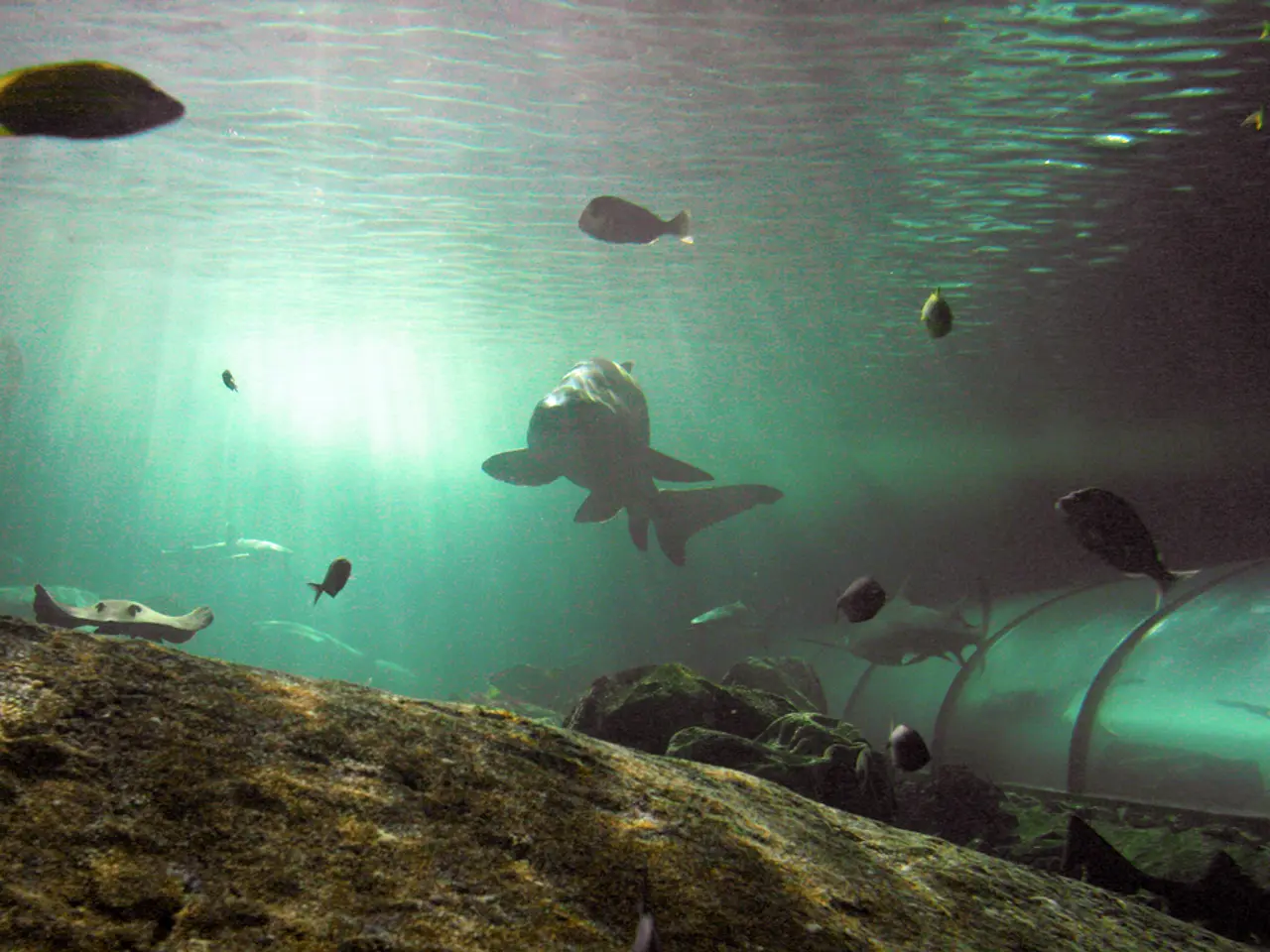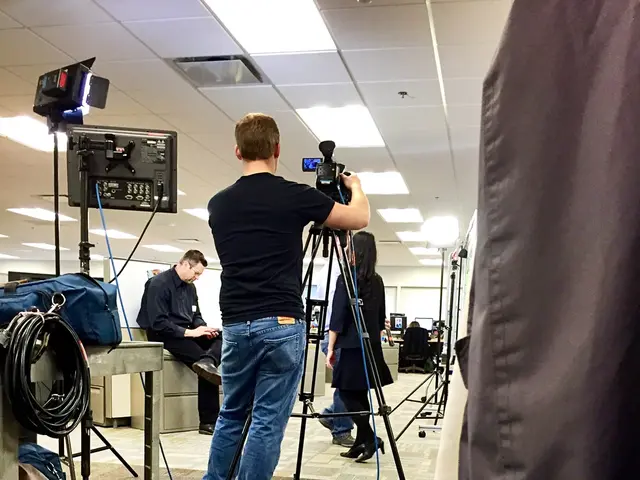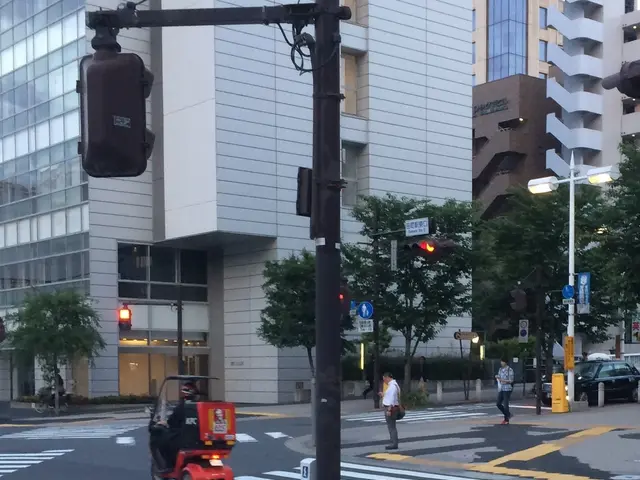Kraken Smartphone Case Photographs
In the world of underwater photography, having the right equipment can make all the difference. A recent dive on the Perseus shipwreck saw the use of Kraken Hydra 5000 lights, paired with Fantasea's UWL-09F wide-angle lens, to capture stunning images.
The same setup was employed during a dive on the Car Wreck in Sri Lanka, where a cloud of fish was photographed below a diver (Photo: Brent Durand).
When it comes to underwater photography with a smartphone in a Kraken housing using additional lenses like the Fantasea UWL-09F (ultra-wide) and UCL-06LF (macro), a good reason to invest in a camera system depends on the situation or task at hand.
For such setups, recommended constant lighting techniques primarily involve using high-quality continuous video lights or hybrid strobes that provide consistent and adjustable illumination suited for both wide and close-up shots.
Key Points and Techniques
- Use hybrid video/strobe lights: Devices such as the Backscatter Hybrid Flash HF-1 combine powerful continuous video lighting (up to 5,000 lumens) with a still photo strobe in one unit. This provides adjustable brightness levels and beam spread (e.g., spot to wide angles), which is essential for adapting to different lenses and subjects underwater.
- Adjust light positioning and diffusion: For ultra-wide lenses (like the UWL-09F), use wider beam angles or diffusers to gently illuminate large scenes without harsh hotspots or shadows. For macro or close-up lenses (like the UCL-06LF), more focused or diffused continuous light close to the subject helps avoid backscatter (light reflecting off particles in water) and produces sharp, well-lit details.
- Optimize color balance: Since water absorbs warm colours (reds, oranges), continuous lighting that compensates for colour loss is beneficial. Many underwater video lights have adjustable colour temperature or red filters to restore natural colours, which is especially important when shooting with smartphones that rely heavily on colour accuracy.
- Leverage the smartphone’s Night Sight or low-light modes: Pixel phones (and similar) used inside Kraken housings benefit from lighting that supplements their computational low-light photography rather than overwhelming it. A steady, moderate-intensity continuous light source helps the camera capture detail without startling marine life or causing glare.
- Ensure compact and balanced setups: Given the Kraken housing and extra lenses add bulk, use compact constant lighting units with great battery life and easy underwater controls so you can maintain stability and focus on composition.
Summary
| Lighting Technique | Effectiveness for Smartphone Kraken Setup | Lens Compatibility | |-------------------------------------|----------------------------------------------------------|------------------------------------------| | High-lumen hybrid video/strobes | Provides continuous lighting and flash in one compact unit, perfect for varying light conditions | Suitable for both ultra-wide and macro | | Adjustable beam angle with diffusers| Prevents hotspots and reduces backscatter, enhances even lighting | Important for wide-angle shots | | Color temperature adjustment | Corrects bluish-green cast underwater, restores natural colours | Beneficial for all lenses | | Moderate continuous light intensity | Complements smartphone night/low-light modes without overexposure | Ideal for delicate marine life close-ups|
The article also discusses the use of affordable cameras that can perform well against more sophisticated systems. For instance, an iPhone 6s+ in Kraken Smart Phone Housing was used to capture a shot of a big picture during a dive on the Perseus shipwreck.
Macro photography was conducted using an iPhone 6s+ in Kraken Smart Phone Housing, Fantasea UCL-06LF Diopter, and Kraken Weefine Ring Light. A moray eel was photographed, and colours were captured on the Car Wreck, all using the same setup.
The author emphasizes the importance of problem-solving and experimentation in photography, encouraging divers to make the most of their equipment and explore creative possibilities.
Read also:
- Joe Rogan popularized the archaeological site of Gobeklitepe as a modern-day enigma.
- Kobo, a prominent e-reading platform managed by Rakuten, relies excessively on third parties for its software operations.
- Electronic reading devices Barnes & Noble NOOK are available at reduced prices, both in their online store and physical bookshops - during Prime Day promotion
- Chicago Sports Network assigns significant task to Mobile TV Group's 56FLEX for broadcasting sports events







